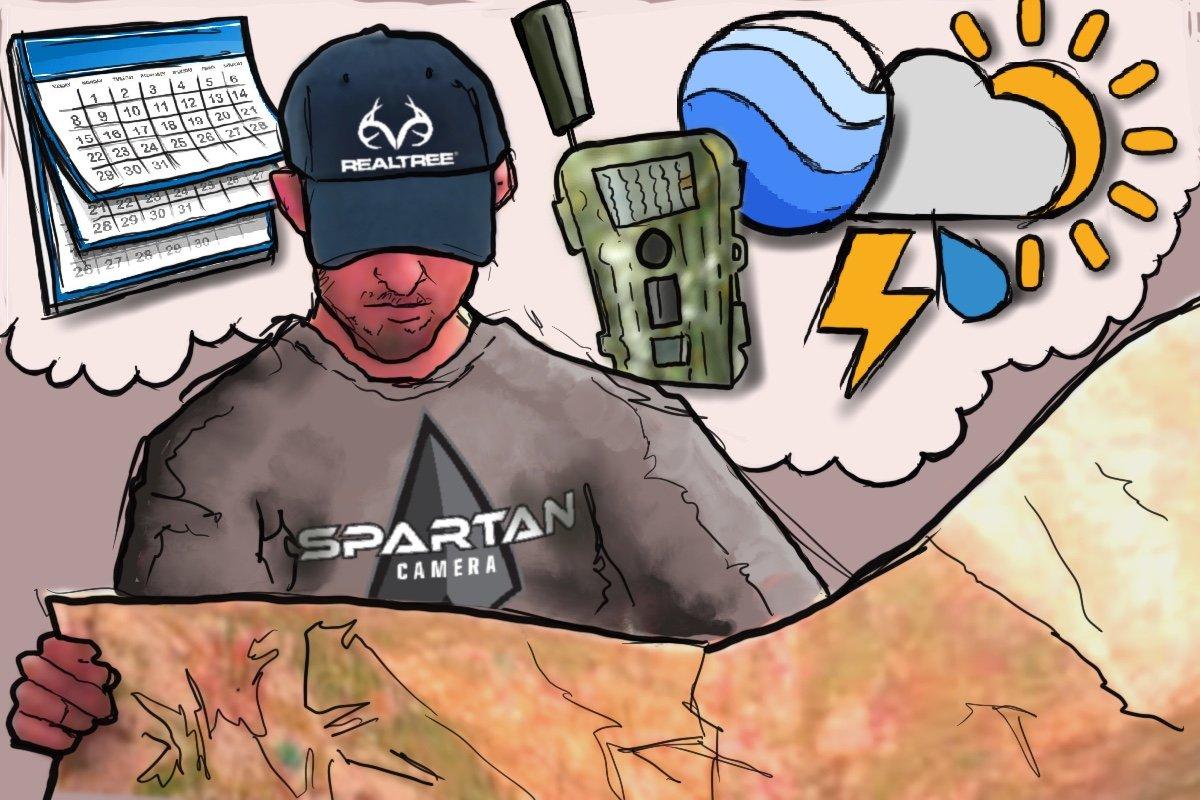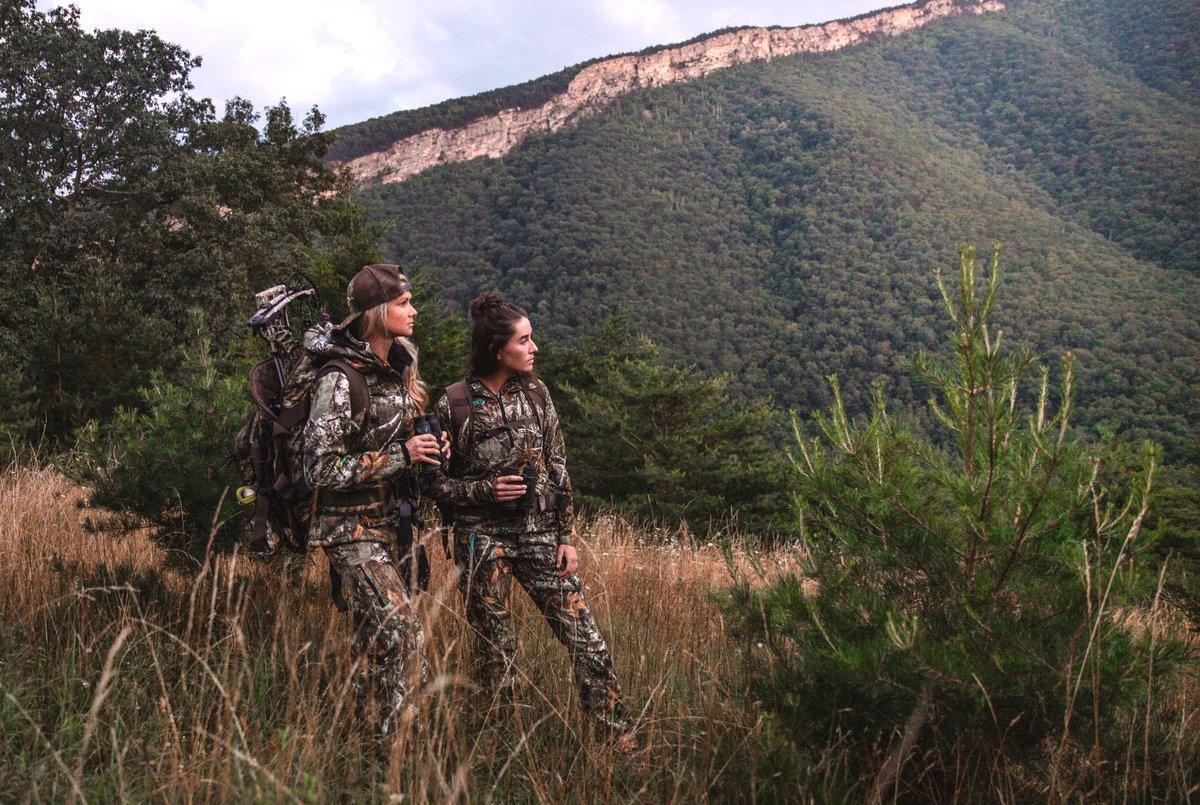Dan Infalt shares his plan for killing big bucks on ground that's open to everyone
The very best deer hunters are much like those at the top of any field or skill - they think differently than all the rest. One such hunter is Dan Infalt, a Realtree.com contributor and the founder of The Hunting Beast. We tapped into his knowledge and asked what his game plan looks like for big public-land bucks. This is how he gets it done.
Step 1: Forget Private Land
Most hunters see public ground in a negative light. They immediately believe it's void of deer, especially big ones. But that's just not true. Deer can't read property signs and don't know the difference between public and private, Infalt says. They bed in the most secure places near the best food.
Sure, there's a high risk of pressure on public ground. But the same can be said for many posted tracts of land. On public, you never know for sure if someone has already burned a spot, Infalt says. And sure, I've seen private ranches where you can see 150-class bucks 10 days in a row. They act as stupid as 1½-year-old bucks on pressured public. But I also have permission to hunt 300-acre private parcels I haven't touched in 10 years because the nearby public is better.
The moral of the story? See both private and public land for what they are. View them equally or you'll never give public land the chance it deserves.
Private land can become a trap, Infalt says. Some hunters think they have it better just because they hunt private land. In reality, a nearby public property might hold a bigger buck.
Step 2: Get in the Right Mindset
The biggest difference in my thinking is that I hunt down specific bucks, Infalt said. I don't just hunt spots because they look good. Once I find a property holding a mature buck, I systematically hunt every area it could be hiding. I hunt down each section until I see or kill the target buck. You're leaving scent and disturbing the area, but this simultaneously stacks the areas you haven't hunted yet. As you keep pushing deeper, this can make each hunt better than the last.
But big public bucks aren't easy. There will be challenges and mistakes. Hunts will be ruined. You'll get over it. Give up the conveniences and lavish luxuries of private ground, like comfy blinds. Throw out the old playbook and reprogram the hunting tactic hard drive.
Positive thinking is key, Infalt says. You'll haul gear through a swamp with water and muck to your elbows, just to find a stand and trail camera in your intended spot. You'll get lost in the dark coming out at night. It's mentally and physically exhausting, and a lot of people give up.
But don't quit. It ain't easy, Infalt continued, but the reward is great when you start seeing success. You have to really want it. You need some sort of warped inner drive that likes the struggle.
Step 3: Choose a General Location
Once your head is in the right place, it's time to work. Start by selecting a state and region. Then, drill down on a three- or four-county area. Focus on places away from civilization.
Look for areas farther away from towns and campgrounds, Infalt says. Look for spots with hard or hidden access. One property I hunt in western Wisconsin has hidden access and no place to park. I've seen one other hunter on it in 15 years.
Use every resource available to you. Contact biologists, property managers and other professionals to find such places. They'll know where deer are killed and what areas receive less pressure. Study Boone & Crockett and Pope & Young records. Determine where the hotbeds are. Records are not only indicative of genetics but also age class and quality habitat. Select multiple properties to focus on, because options are important.
"You have to be hunting a big buck to kill a big buck. Too many people hunt properties instead of hunting big deer."
Step 4: Scout Digitally and in the Field
Digitally analyze every piece of public ground in the focus area. Scan potential properties for key characteristics.
I look at topo maps for bedding features that draw bucks onto the property, Infalt says. I especially like east-facing ridges and points that have leeward (west, northwest and southwest) winds. Bucks like bedding in the top third of those hills with the wind coming over the top.
Other key things to look for include saddles, funnels, pinch points, oxbows, islands, etc. And once the cyber scouting is done, put boots on the ground. Nothing beats old-fashioned, real-time intel.
Glass for bucks or check for current sign, Infalt says. The buck you killed last year is dead. Stay on current sign. You have to be continually looking for properties and checking to see what has taken up residency. You have to be hunting a big buck to kill a big buck. Too many people hunt properties instead of hunting big deer.
If time allows and you can do so without pressuring deer, post trail cameras. Place them on the fringes of cover where they're easy to check. Spartan's cellular cameras send you photos in real time, so you don't have to wait a week or two and then go back in to pull cards.
Plot all rubs, scrapes, trails, beds, food, water and trail camera photos on an aerial map. This will help visualize how your target deer uses the property.
Don't Miss: 5 Overlooked Public Land Deer Hunting Hotspots
Step 5: Find the 10%
While waiting to make your move, pattern other hunters who frequent the property. See where they go and cross these spots off the list.
Most hunters start at a parking lot, go about 400 yards, and hunt, Infalt says. Some hunt closer to the truck. Others go as far as they can. But few hunt along the road, or across obstacles (like water).
Why does that matter? Big bucks go where people don't. Overlooked is the buzz word for finding mature bucks on public land. But hunting pressure isn't a bad thing in Infalt's mind.
Pressure has never really bothered me, he says. I just need to know a buck is on a property. Most hunters hunt in the same manner and actually help me. They put enough pressure on the buck I'm after to put him right where I expect him to be. I break down a property and mark off about 90% of it based on where hunters typically go.
Hunting pressure moves deer, and often into tiny parcels of ground that don't get hunted, even if they're open for it.
Most of the time, I find big bucks on the remaining 10% of the property, Infalt says. Look for good buck habitat within that piece and your search is narrowed down to a very manageable area.
So where is that 10%?
Seek out swamps and marshes where deer can use water, muck, and large areas of heavy cover to escape, he says. Think about how hard or easy it would be for gun hunters to kill all the bucks before they mature. Ask yourself if bucks have adequate space to hide so they can survive a few seasons and get big enough to target those.
Step 6: Recognize Key Days and Conditions
Public and private ground both get hunted harder on weekends. Studies reported by the QDMA show that deer respond especially negatively to this pressure through the weekend and into the next week. Pressured deer tend to move most on Wednesdays, Thursdays and Fridays. Keep this in mind when using your vacation days.
Public-land bucks are almost as vulnerable to outside influences as their private land counterparts. Also according to the QDMA, there are certain conditions that spur them to move. Some of these things include significant (15-plus-degree) temperature swings within 24 hours, weather fronts, minor weather events and a barometric pressure around 30. Other factors include an overhead/underfoot moon position and when deer have the wind more in their favor. Hunt with a just-off wind and odds increase of seeing that mature buck during daylight, too.
Take advantage of them when opportunities arise. It just might make deer move a little more (and further) during daylight hours.
Step 7: Use Responsible Entry and Exit Routes
When it's time to hunt, the last thing you should do is blow deer out before you even get to your stand. Choose your entry and exit routes with caution.
Access areas near water by boat. Ride a bicycle along well-worn trails. Walk through creeks, drainages and ditches. Use anything you can to conceal yourself visually and audibly. Some options reduce ground scent, too.
Access suck? If possible, talk with adjacent landowners. They often permit hunters to access the backsides of hard-to-reach public areas. You might have to pay a small fee, but showing respect opens up a lot of possibilities. You might even get permission to hunt their ground down the road, too.
Once you've mapped out your route, don't march in with your head down. Move slow. Look for sign. Scan for bedded deer. If the sign is hot, set up shop right there. Pushing further might blow deer out of the area. Hunt your way into the property and don't get sloppy.
Most hunters get few opportunities at mature bucks in their lifetime. But great deer hunters often have a few each year. Capitalize on them when they come, though. Be poised and ready. Don't blow it. And if you do, collect yourself and start all over again. Deer hunting ain't easy.
But if you succeed? Tag it. Gut it. And keep wire-tied shut about it if you want to kill another big public-land buck there next year.
Don't Miss: How Mature Bucks Use the Wind
Check out more stories, videos and educational how-to's on deer hunting.











